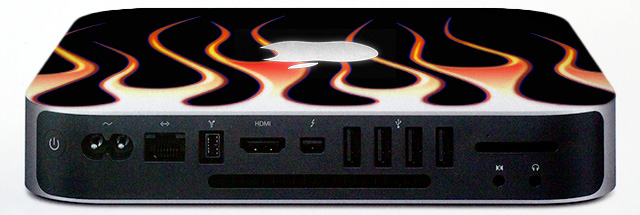
The littlest Mac of them all, the Mac mini, was updated in late October. The last time we took a look at the mini was in July 2011, when Ryan Paul examined the mini's suitability as a Home Theater PC (HTPC); he had some positive and some negative things to say about the shiny metal cuboid. The new mini improves on the old in several substantial ways, but the most notable thing about the latest revision is that it's currently the only Mac you can buy which comes equipped with Apple's Fusion Drive technology. Fusion Drive "fuses" together a solid state drive and a traditional spinning hard disk drive into a single volume, and does some interesting tricks to tier data between the two different physical drives.
We've said quite a bit about Fusion Drive on Ars, culminating with our big hands-on post, but the mini is worth looking at by itself, too. The mid-tier version comes with a punchy Ivy Bridge Intel Core i7 processor, which makes it one of the fastest computers in my house right now; it's quiet, quick, and it's at least vaguely affordable. Well, kind of.
The price of entry
The mini comes in three flavors: an entry-level version with a dual-core Ivy Bridge i5 and 4GB of RAM, a mid-level version with a quad-core i7 and 4GB of RAM, and a server version with a quad-core Ivy Bridge i7, two hard drives, and OS X Server. Out of these three, only the mid-tier model can be ordered with Fusion Drive, though the server variety can optionally be configured with one or two 256GB SSDs. Because we wanted to both evaluate the mini itself and Fusion Drive, went with the mid-tier version. Aside from adding the Fusion Drive, it is otherwise exactly as listed on Apple's website.
| Mid-tier 2012 Mac mini, as reviewed | |
|---|---|
| OS | OS X 10.8.2 |
| CPU | Quad-core 2.3GHz Intel Core i7-3615QM (Turbo Boost up to 3.3GHz) |
| RAM | 4GB 1600MHz DDR3 (2x 2GB SODIMMs) |
| GPU | Integrated Intel HD4000 |
| Storage | 1TB Fusion Drive (128GB SSD + 1TB 5400 RPM HDD) |
| Networking | Gigabit Ethernet, 802.11a/b/g/n Wi-Fi, Bluetooth 4.0 |
| Ports | Firewire 800, HDMI, Thunderbolt, 4x USB 3.0, audio line in minijack (digital/analog), audio line out/headphone minijack (digital/analog), SDXC card slot |
| Size | 7.7×7.7×1.4" (19.7×19.7×3.6 cm) |
| Weight | 2.7 lbs (1.22 kg) |
| Starting price | $799 |
| Price as reviewed | $1,049 |
The current low-profile form factor was introduced in July of 2011 and brought with it support for Apple and Intel's then-new Thunderbolt technology (formerly known as Lightpeak). Apple apologists opined that the inclusion of the high-speed Thunderbolt port on the mini obviated the need for USB 3, though in the year since the Thunderbolt-equipped mini launched, Thunderbolt devices haven't really gained much in popularity and the ecosystem is looking a little bland. USB 3, on the other hand, is popping up in devices everywhere.
The new mini rectifies the oversight and comes with an entire slew of USB 3 ports on the back, enabling it to attach to the entire broad set of fast peripherals which use the standard. If you can forego the Core i7 and the upgraded storage, then you can stick with the base model mini. At $599, it is the least-expensive way to get your hands on OS X. The specs are still quite nice for a small-form-factor desktop, and the base mini serves as a gateway drug for Mac newbies and would-be iOS developers who dream of churning out the next Angry Birds.
Unpacking
The mini's packaging is simple, and the computer comes with few pack-ins. Aside from the mini itself, the box contains a small instruction booklet with the requisite Apple stickers, an HDMI-to-DVI adapter, and a power cable. The mini's internal power supply means that the power cable is just that, and the computer needs no unsightly wall wart to function. This is a good thing.

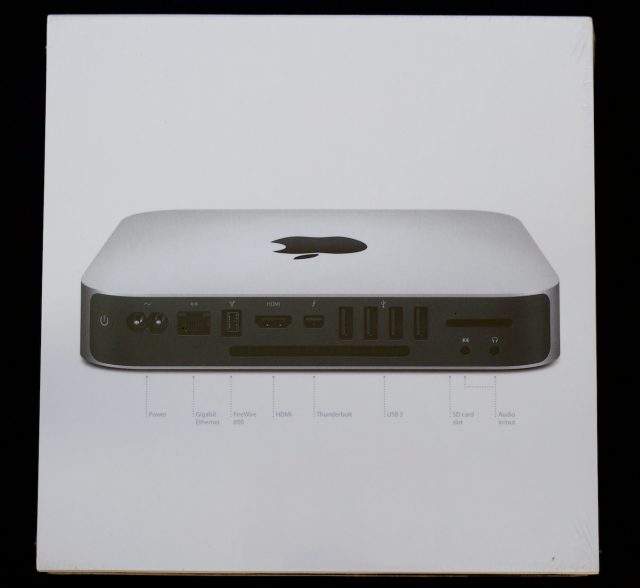

Externally, the mini is unchanged from its predecessor. When looking at the two next to each other, they are indistinguishable.
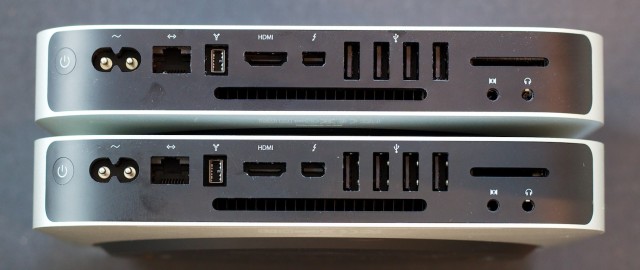
Things look mostly the same on the inside, too, though this mini is equipped with Fusion Drive. In addition to the HDD, it sports a 2.5" Samsung 830-based SATA III solid state disk in its lower drive bay, connected to the L-shaped motherboard via a custom connector.
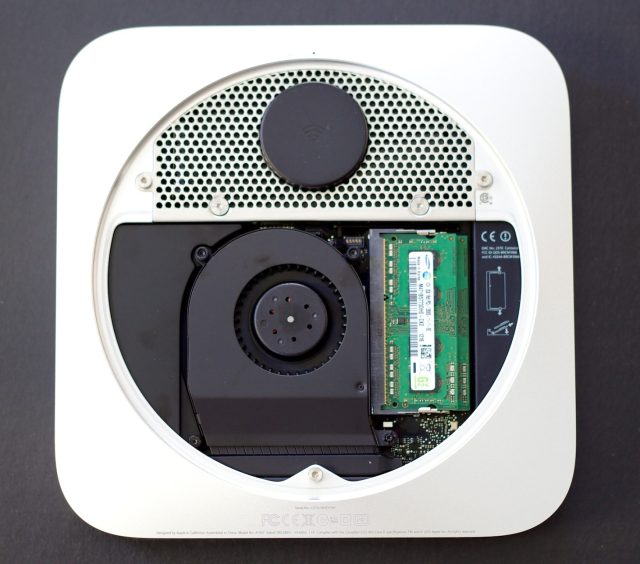
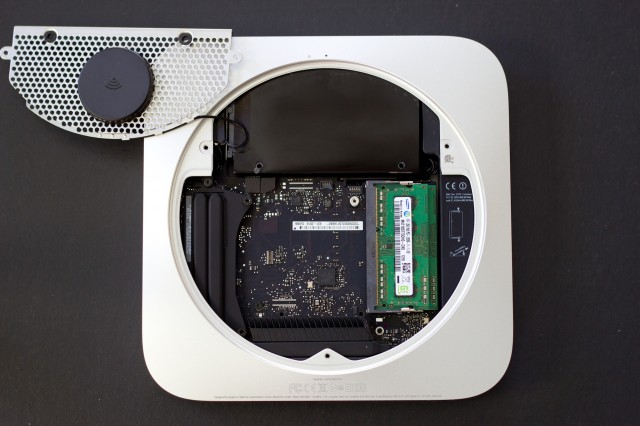
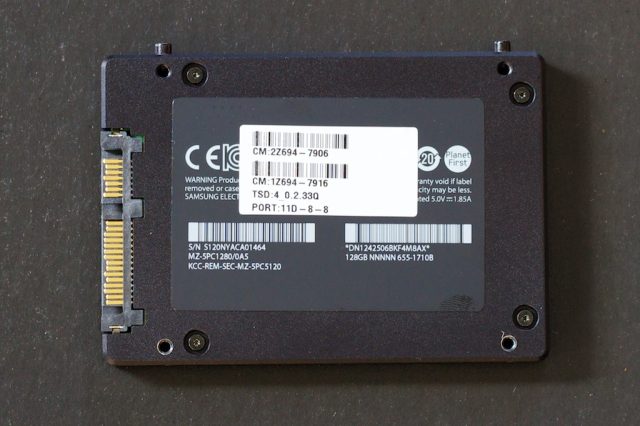
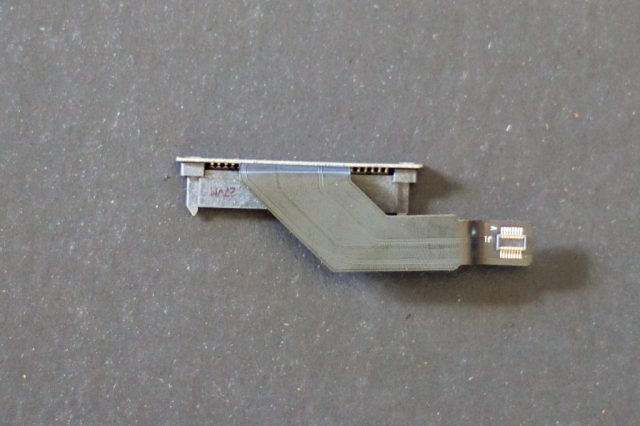
reader comments
169